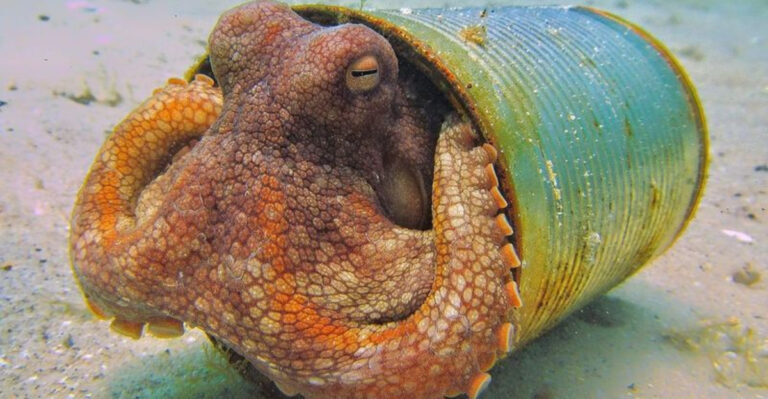Ancient Sturgeon That Swam With Dinosaurs Now Nearing Extinction
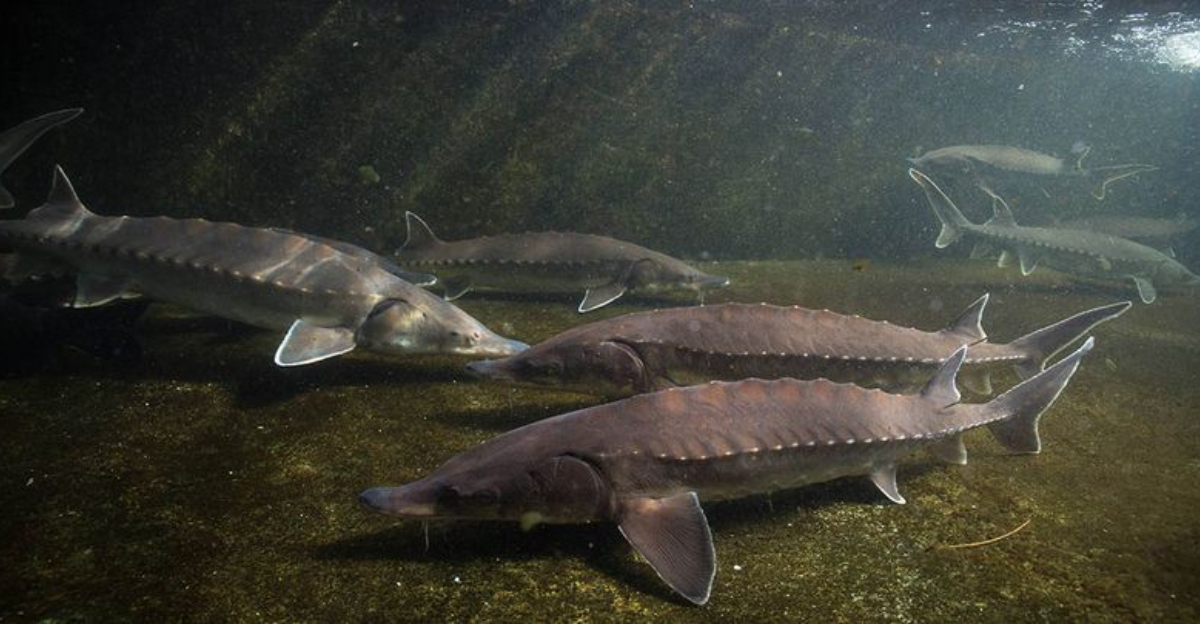
Imagine a fish so ancient it watched dinosaurs come and go while continuing to glide through Earth’s waters. Sturgeon have survived mass extinctions and ice ages, yet now face their greatest challenge – human activity.
These remarkable living relics, once abundant across the Northern Hemisphere, are disappearing at an alarming rate.
1. They’ve Existed For Over 200 Million Years
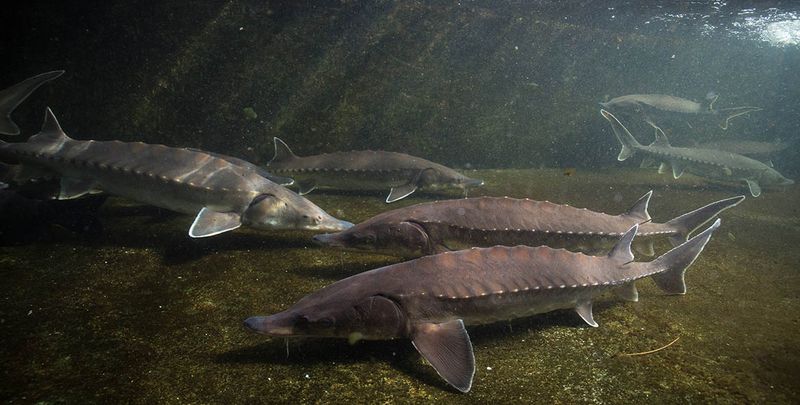
When T-Rex was just an evolutionary twinkle in Earth’s eye, sturgeon were already swimming in prehistoric waters.
These incredible fish appeared during the Triassic period, making them older than many mountain ranges and continents as we know them today. Few creatures on Earth can claim such an impressive timeline.
2. Sturgeon Are Living Fossils

Virtually unchanged for millions of years, sturgeon wear their ancient heritage on their armored bodies.
Their distinctive rows of bony plates called scutes haven’t needed redesigning since before flowering plants evolved! Scientists study these remarkable fish to understand how species can maintain successful body plans through countless environmental changes.
3. They Can Grow Over 1,000 Pounds
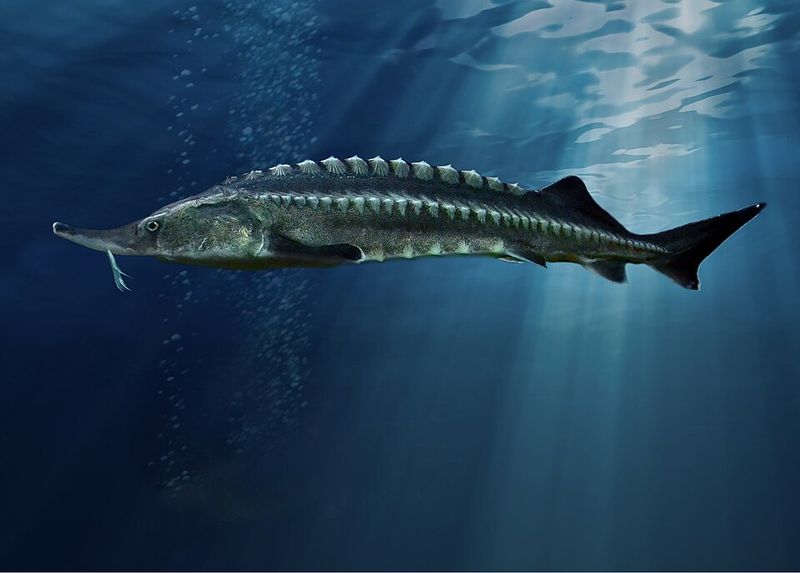
Beluga sturgeon can reach the weight of a small car! The largest specimen ever recorded tipped the scales at 3,463 pounds and stretched 24 feet long.
While most sturgeon species are smaller, many can still grow larger than an adult human, with females typically outgrowing males.
4. Some Live For More Than A Century

Grandparents of the fish world, sturgeon can celebrate more birthdays than humans. Scientists have documented individuals living past 150 years!
This remarkable longevity means some sturgeon swimming today were born when Abraham Lincoln was president. Their slow growth and late maturity contribute to this impressive lifespan.
5. Habitat Loss Is A Major Threat
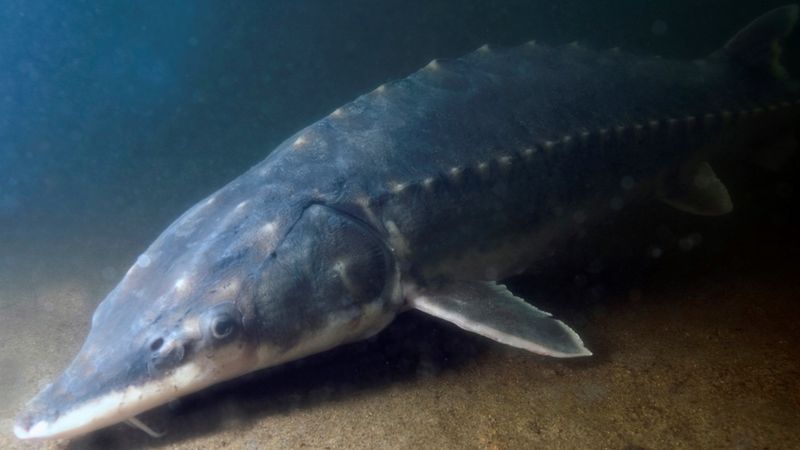
River modifications have stolen sturgeon homes at an alarming rate. Channelization, dredging, and shoreline development destroy the specific bottom conditions sturgeon need for spawning.
Many species require particular combinations of gravel, current, and depth that are increasingly rare in our engineered waterways.
6. Dams Block Their Spawning Routes
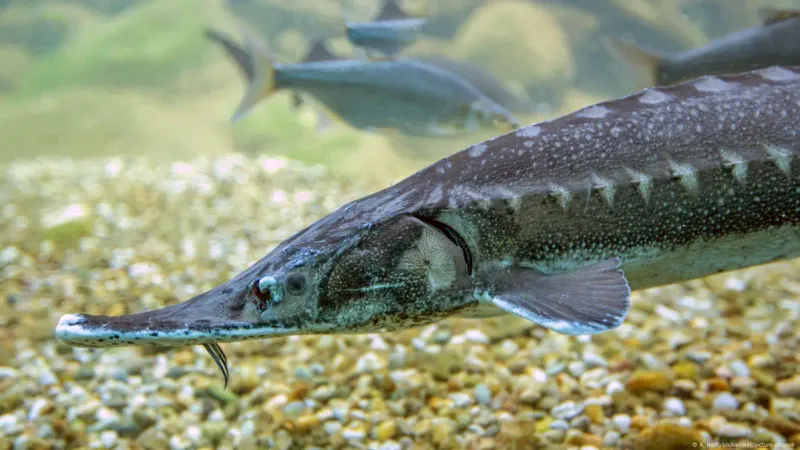
For millions of years, sturgeon followed ancient highways in the water. Now concrete walls stop them cold.
Most species must swim upstream to lay eggs, but dams create impassable barriers. The Danube River once hosted six sturgeon species; after Iron Gates dams were built, populations crashed as fish couldn’t reach traditional spawning grounds.
7. Overfishing Has Devastated Populations

From abundance to scarcity in just a century – human nets have been relentless. The Columbia River once yielded 5.5 million pounds of sturgeon annually.
Today, most sturgeon fisheries worldwide have collapsed or require strict management. Their slow reproductive rate makes them especially vulnerable to fishing pressure.
8. Caviar Demand Fuels Illegal Trade
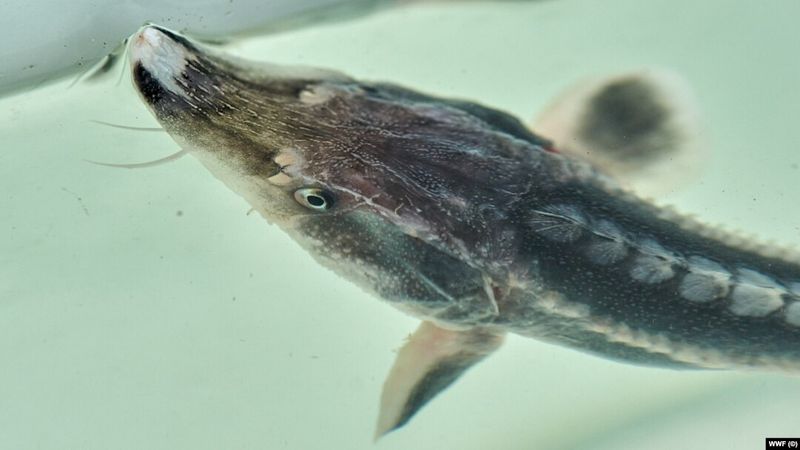
Black gold – that’s what poachers call sturgeon eggs. A single female beluga sturgeon can carry $3.5 million worth of caviar.
This luxury food drives a shadowy underground market where criminal networks target the remaining wild sturgeon. Despite international protection, illegal caviar continues to appear in high-end markets.
9. They Use Electroreception To Hunt

Whiskers aren’t just for cats! Sturgeon have sensitive barbels that detect electrical fields. These specialized sensors help them locate buried prey like worms and shellfish in murky waters where visibility is poor.
Combined with their excellent sense of smell, this gives sturgeon a hunting advantage in the darkest depths.
10. Their Skeletons Are Mostly Cartilage

Shark cousins? Not quite, but sturgeon share something unusual with them – cartilaginous skeletons. While most fish have bony skeletons, sturgeon maintain primarily cartilage throughout their lives.
This flexible internal structure, combined with their armored exterior plates, creates a unique combination of toughness and maneuverability.
11. Pollution Threatens Juvenile Survival
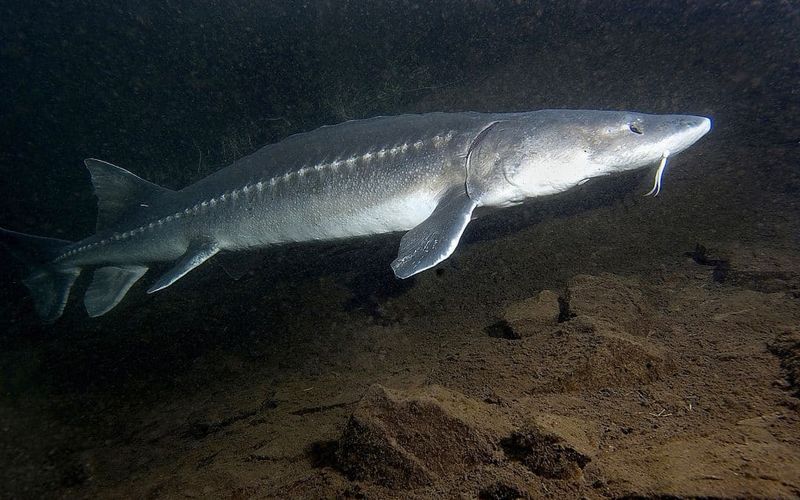
Baby sturgeon face a toxic gauntlet in modern waterways. Their sensitive early life stages are particularly vulnerable to chemical runoff, heavy metals, and microplastics.
Many industrial pollutants concentrate in the same river bottoms where young sturgeon feed and develop, creating deadly exposure during their most fragile period.
12. They Spawn Only A Few Times In Life

Talk about playing the long game – sturgeon invest years preparing for rare reproductive events. Females may take two decades to reach sexual maturity, then spawn only every 2-7 years.
This conservative reproductive strategy worked for millions of years but becomes a fatal weakness when facing modern pressures like overfishing and habitat loss.
13. Conservation Programs Are Underway
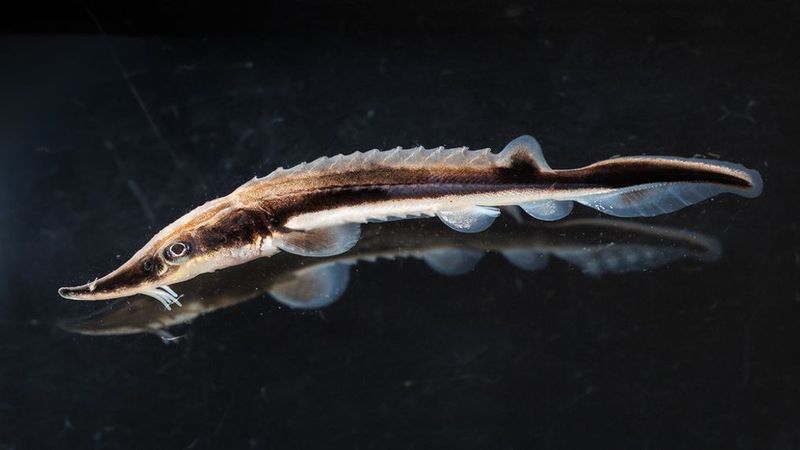
Hope swims in hatchery tanks across the world. Dedicated scientists are breeding endangered sturgeon and releasing them into historical habitats.
The French-German cooperation on Rhine River sturgeon and North America’s lake sturgeon restoration projects show promising results. Each baby sturgeon released represents a small victory against extinction.
14. Without Action, Extinction Is Likely

Survivors of the dinosaur extinction may not survive us. Of 27 sturgeon species worldwide, the IUCN lists 16 as critically endangered. Four may already be extinct.
Their disappearance would erase living history and crucial pieces of aquatic ecosystems. The next decade represents our last chance to save these ancient swimmers.


